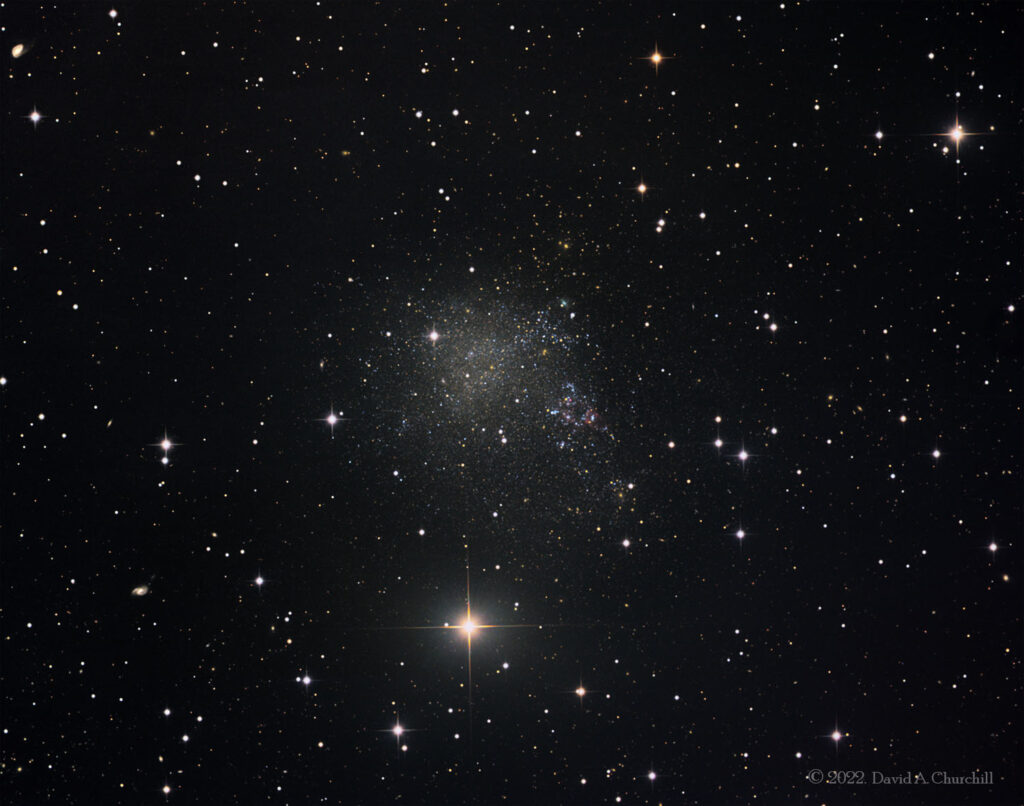IC 1613 (Caldwell 51)
Irregular Dwarf Galaxy, Cetus
- Description
- Technical
- Links
IC 1613 (also known as Caldwell 51) is an irregular dwarf galaxy, visible in the constellation Cetus near the star 26 Ceti. It was discovered in 1906 by Max Wolf, and is approaching Earth at 234 km/s. IC 1613 is a member of the Local Group. It has played an important role in the calibration of the Cepheid variable period-luminosity relation for estimating distances. Other than the Magellanic Clouds, it is one of the few Local Group dwarf irregular galaxy where RR Lyrae-type variables have been observed; this factor, along with an unusually low abundance of interstellar dust both within IC 1613 and along the line of sight enable especially accurate distance estimates.
In 1999, Cole et al. used the Hubble Space Telescope to find that the dominant population of this galaxy has an age of ~7 Gyr. Using its Hess diagram, they found that its evolutionary history may be similar to that of the Pegasus Dwarf Irregular Galaxy. Both galaxies are classified as Ir V in the DDO system. Also in 1999, Antonello et al. found five cepheids of Population II in IC 1613, giving self-evident support for the existence of a very old stellar population component of IC 1613. In 1999, King, Modjaz, & Li discovered the first nova ever detected in IC 1613.
In 1999, Cole et al. used the Hubble Space Telescope to find that the dominant population of this galaxy has an age of ~7 Gyr. Using its Hess diagram, they found that its evolutionary history may be similar to that of the Pegasus Dwarf Irregular Galaxy. Both galaxies are classified as Ir V in the DDO system. Also in 1999, Antonello et al. found five cepheids of Population II in IC 1613, giving self-evident support for the existence of a very old stellar population component of IC 1613. In 1999, King, Modjaz, & Li discovered the first nova ever detected in IC 1613.
Telescope: Planewave CDK17 (FR) f4.5
Mount: Astro Physics 1600GTO
Camera: QHY16200A/ Integral FW
Guider: Agena Starguide II / ZWO ASI178MM
Filters: Astronomik 36mm LRGB
L: 48×10 mins = 480 mins, R: 24×10 mins = 240 mins, G: 24×10 mins = 240 mins, B: 24×10 mins = 240 mins
Total Imaging Time: 20h 00m
Data Imaged remotely over 7 nights during October 2022.
Imaged from Observatorio El Sauce, Chile, in partnership with Fred Espenak.
Data acquisition & Processing by David Churchill.
None

